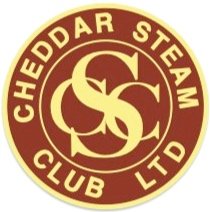
Operational procedures for our five inch railway track…….with specific reference to Health and Safety and Insurance considerations.
Definitions: MUST is mandatory and SHOULD is sensible
The 5 inch gauge track (only) is now in operation for 0-4-0 steam and electric engines, and similarly “bogied” vehicles.
Maximum speed of any engine must be below 5mph. Signage must indicate this. (HSE paragraph 54)
Electric engines must have a battery isolator and a safety cut out switch. (HSE paragraph 42)
The tie bar between an engine and its trolley must be of a suitable length to suit the “S” bends on the track to prevent buffer lock on the tight radii. This length will vary amongst different models, and should be practically checked manually before riding.
In case there are derailments or accidents, owners riding on the track must have a second person in attendance. Preferably one who has a functioning mobile phone. We have no telephones on site. Directions explaining club location details for emergency services are posted on the shed and on the other station platform as well as on the notice board outside and inside the pavilion.
The carrying of any passengers, even for training purposes, extra to the driver is not permitted.
All riding trolleys must be braked, and initially should be pushed around the track by hand.
Significant care should always be taken… because all curves are only 18 feet radius and slow speeds are required to negotiate them.
The running direction must be clockwise only.
Before any locomotive is run for the first time ….The owner must ensure that they are assisted with its inaugural run by a competent member of the club who has had sufficient experience of riding and maintaining the track, and is aware of any problems that might arise.
Vehicles that have not run regularly on the track may require a ‘fitness to run’ examination prior to being allowed on the track. (HSE para.41f)
(HSE paragraph 57) A proving run should be undertaken to confirm that the entire track is in safe working order. Details should be recorded and signed for by driver or the designated person responsible for the overall safe operation of the railway.
(HSE paragraph 78) Up to date documentation should be kept, to aid operational training, maintenance, and fault finding. If there is no record of an inspection there is no proof that the inspection ever took place. Checklists will assist those undertaking the inspections to complete all elements of the inspection.
(HSE paragraph 79) Defects identified during inspection must be recorded and arrangements made to remedy the fault. It may be necessary to remove the equipment from use, or impose suitable restrictions so that safety is not compromised until such time as a full repair can be completed.
(HSE paragraph 80) Records of inspections should not only include defects found and actions taken, but where no fault is found during a routine inspection, this fact should also be recorded as evidence that the prescribed inspection has been undertaken.
When lifting models onto the track be aware that for (men) weights of 20 kg or above, two people should share the weight.
Care must be taken to ensure any spectators are at a safe distance and if minors then closely supervised.
Any non-club members should have their own club’s third party insurance and must be signed in as a Day member of our club by their sponsor. The small fee should be paid to their sponsor, who will pass it to the treasurer.
Any steam locomotive must have full “in date” hydraulic and steam certification, which should be offered on arrival.
It is also the duty of every club member to report any matters that jeopardise safety.
In the event of Accidents:
Ensure situation will not get worse. Assess. Call for ambulance, if necessary or if in doubt.
Treat or help those involved where appropriate.
Talk to all involved.
Fill the Accident Report Form located in the life-ring / key cabinet with witnesses, persons involved etc. Get contact details of those present. Please get the completed form to the Club secretary or an officer of the Committee as soon as possible.
Do not judge, proportion blame or investigate, just record… “Weakest ink is better than strongest memory”.
Take pictures and notes.
Inform Chairman, and/or Health and Safety Officer, and/or Secretary…. who will inform the Committee.
Finally, Cheddar Steam Club Ltd believes it has taken reasonable actions and provided sufficient guidance and paperwork, which if followed, should ensure the safety of its members.
In summary, the owner/driver has direct responsibility for themselves in taking care and attention to driving/riding and to operating in a safe manner.
For a copy of the Health and Safety Executive (HSE) document, then please contact a committee member.
Cheddar Steam Club Ltd, Committee
